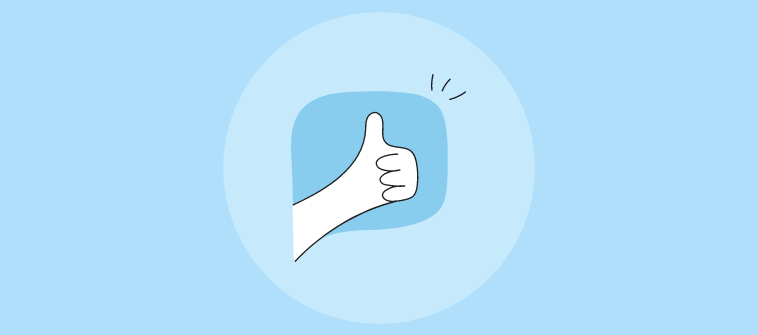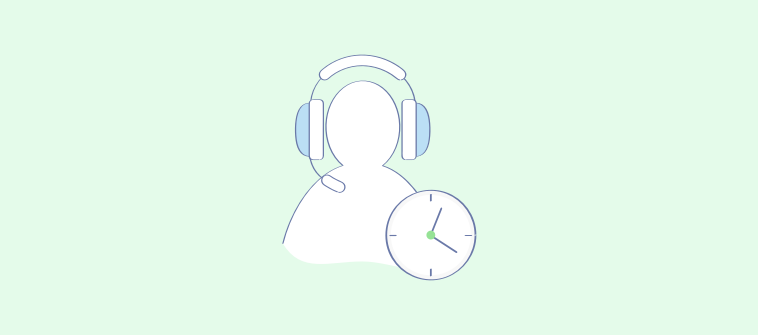No matter how good your SaaS product is or how much you’ve spent on promoting it, if you fail to provide delightful SaaS customer support, you fail your customers, too!
The industry has grown 500% in the last seven years, pushing businesses to prioritize product development and customer support.
So, how do you navigate this labyrinth? By following best practices to deliver top-notch customer experiences.
This blog explores the art and science of SaaS customer support. We’ll look into what it is and 15 best practices to make every service interaction count. Let’s explore!
What Is SaaS Customer Support?
SaaS customer support refers to assisting customers during the pre-and post-sale journey with your SaaS product. When customers have questions, your support team will be there to provide answers and help them find success with your product.
The assistance could be with installation, configuration, troubleshooting, and general usage questions.
SaaS support includes communication channels like email, chat, phone and self-service resources like integrated saas knowledge base software and FAQs. The goal is to help users make the most of the software, resolve issues promptly, and ensure a positive customer experience.
Customers with a positive experience with SaaS customer support are likelier to recommend your product to others.
Importance of SaaS Customer Support
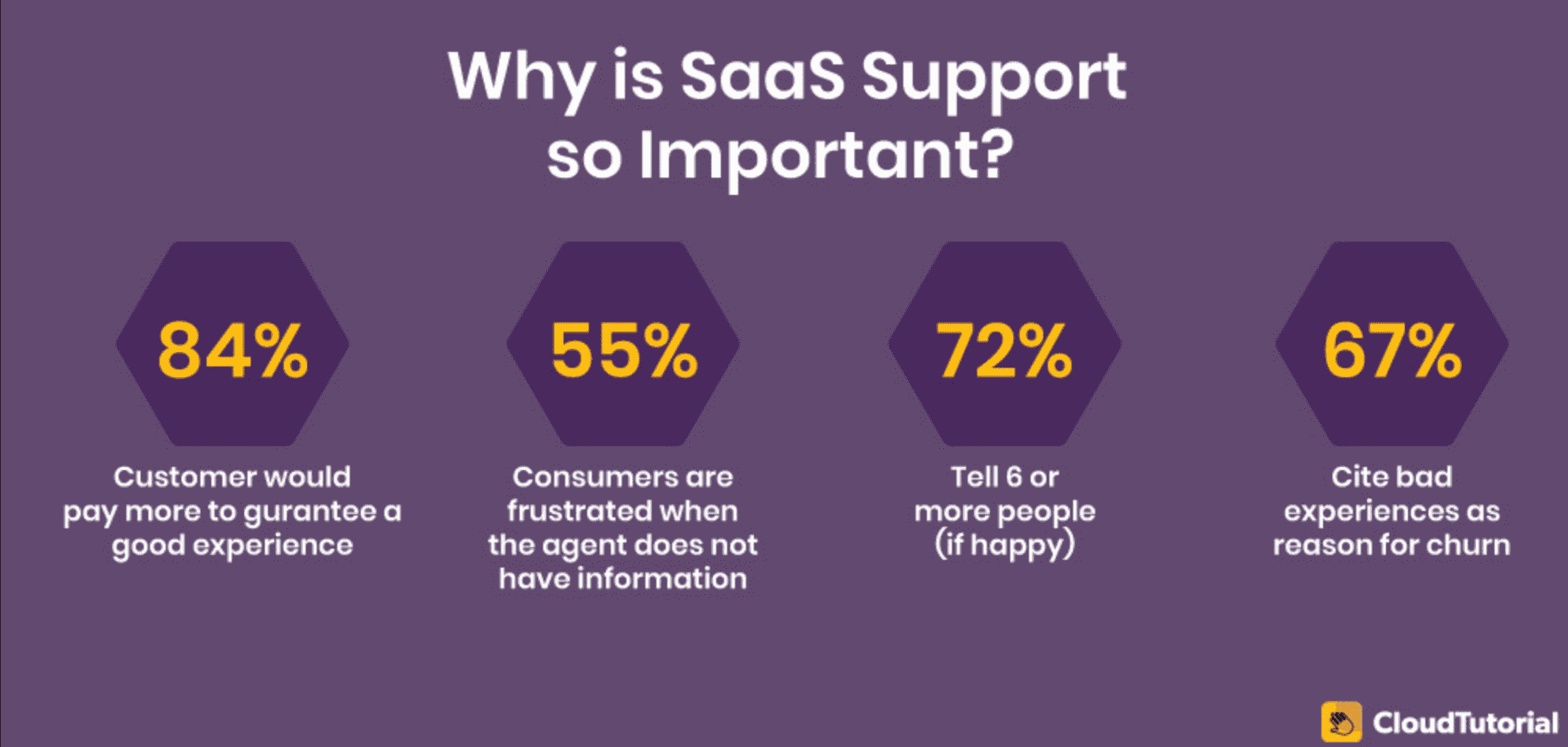
Considering the growing popularity and adoption of SaaS products, customer support in SaaS has become even more critical.
It is one of the best ways to understand customers’ feelings about your business.
How quickly and efficiently you solve customer issues can make or break your relationship with your customers. Here is why SaaS customer support is essential:
Promotes Brand Loyalty
Customer support in SaaS is not just about resolving issues; it’s also about building relationships. When customers feel cared for, it fosters a sense of loyalty towards your brand.
By prioritizing customer needs and solving their problems, you retain your existing customer base and improve your chances of getting additional purchases. Customers are more likely to explore add-ons or other features when they trust a brand and feel confident in receiving the proper support.
Loyal customers also become your brand advocates, spreading positive word-of-mouth and enhancing your brand’s reputation. This organic marketing can help attract new customers and grow your business.
Reduces Customer Churn Rate
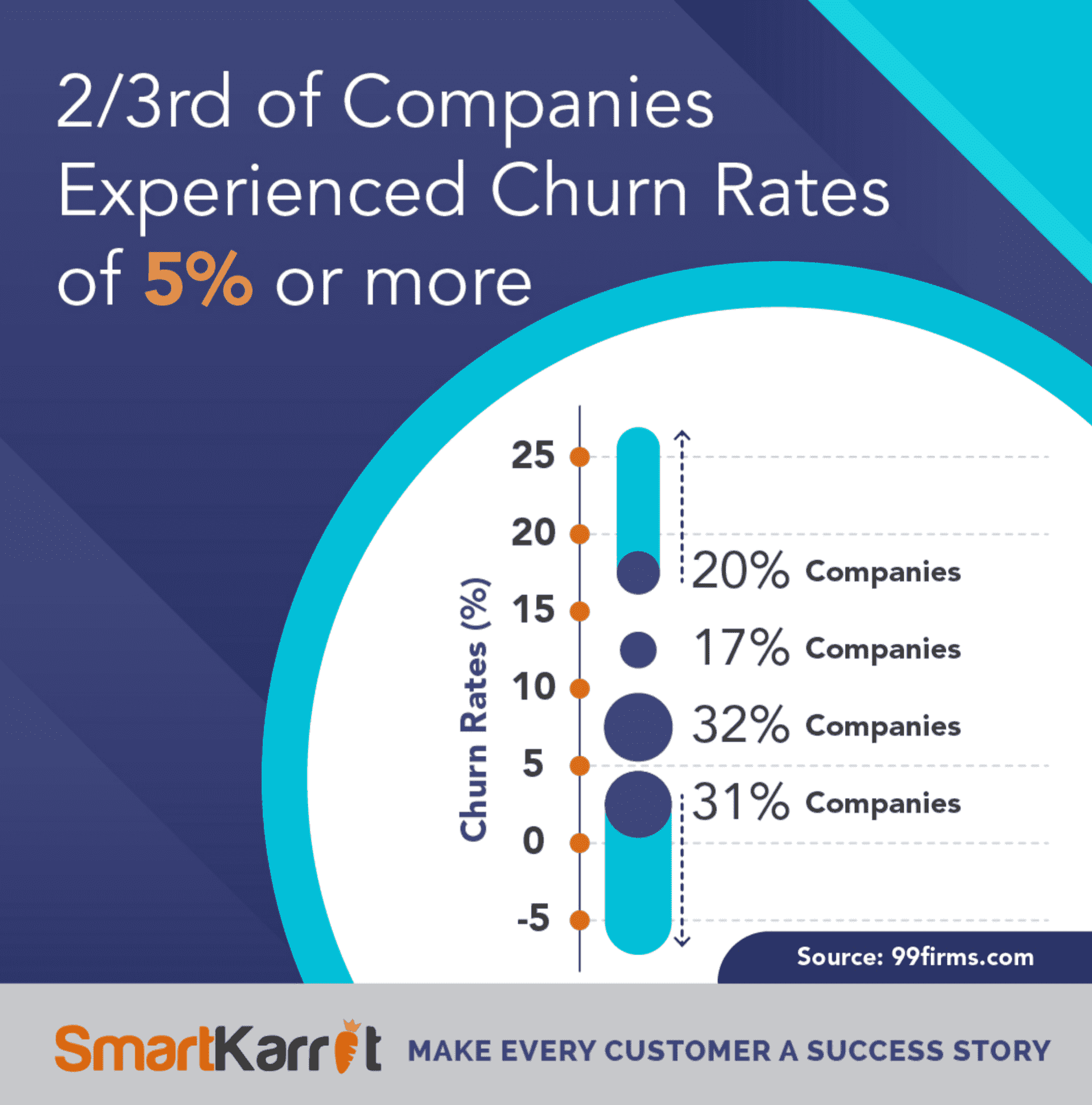
By providing excellent customer support, you can create a positive customer experience that keeps customers returning for more. This can lead to lower churn rates, increased customer satisfaction, and more repeat business.
Your support teams can proactively contact customers to offer help and support. For example, you can send emails with tips on using the product more effectively or offer to help customers with onboarding or training.
Your customer support teams can gather customer feedback about their experiences with your SaaS product. It can help you identify areas where the product can be improved and develop new features that meet customer needs.
Increases Willingness to Pay More
According to statistics, 86% of buyers are willing to pay more for a great customer experience.
This means that efficient customer support can directly impact your revenue. When customers feel valued and know their concerns will be addressed promptly and effectively, they are willing to pay a premium for your product or service.
Improves Team Performance and Customer Experience
Effective customer support is not just about addressing and resolving customer issues but also about constantly improving your team’s performance.
By analyzing key metrics like response time, the number of new questions, the number of users asking questions, the number of issues resolved, the number of users whose questions were resolved, and hourly workload statistics by agents, you can identify areas of improvement.
This data-driven method helps you make informed decisions and implement strategies that enhance team performance and improve customer experience.
Promotes Business Growth
The SaaS industry is booming, with a market size of $186.6 billion, projected to reach $700 billion by 2030.
By attracting and retaining more customers through effective customer service, you can capture a larger share of this expanding market. Moreover, satisfied customers recommend your brand to their acquaintances, contributing to organic business growth.
Best SaaS Customer Support Practices to Deliver Delightful Customer Experiences
Every SaaS business is unique in its mission and vision. There’s no one-size-fits-all formula for SaaS customer support.
However, your support teams can follow some fundamental tactics or best practices, irrespective of your business model and operations.
Ingrain Customer Service in Your Business Culture
First, it’s vital to embed the true essence of customer service into the core of your SaaS business. From onboarding employees to leadership transitions, from the business’s inception to its expansion.
Every step you take – policy amendments, expansion plans, recruitment, new product development, securing venture capital, etc., should be motivated by the goal of delivering an exceptional customer experience.
Every team member in your organization, from interns to the CEO, should understand that you are committed to your customers and will go above and beyond to deliver an outstanding customer experience.
Structure Your Customer Support Process
Structuring and designing a robust model for support services is essential for long-term success. It helps resolve issues quickly, saves resources and time, and creates a solid foundation for scaling up your support.
Without a structure, your customer service operations will be chaotic and random. Allocating a budget to build a solid structure for your entire customer support operations can streamline the customer support process.
For example, a software company can structure its customer support based on the severity of the customer problems:
Tier 1: Support for general inquiries and issues about the product
Tier 2: Support for technical support queries
Tier 3: Support for advanced technical issues related to the bugs and features
Cater to Self-Service Loving Customers
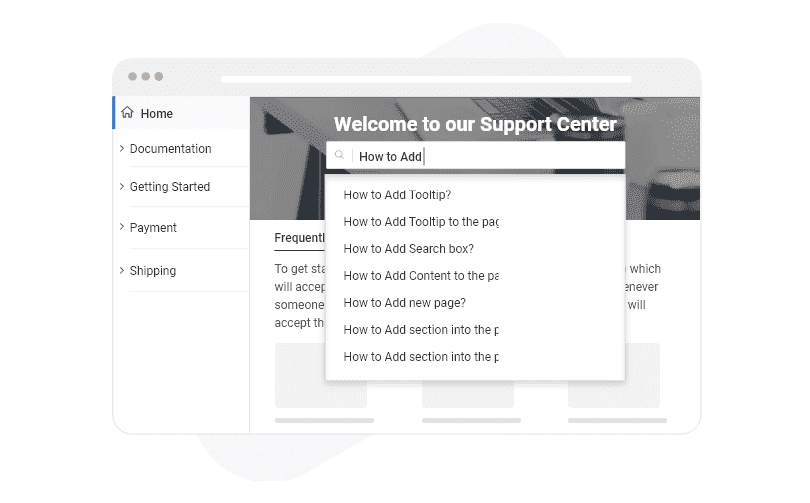
Every customer is different – not everyone wants to interact with a customer support professional or chat with a human agent.
Many customers prefer self-help to resolve their issues without human or bot interaction. Statistics show that around 70% of customers prefer solving issues independently via a self-service help center or documentation.
So, self-help options should be integral to your SaaS customer support strategy. Tools like a knowledge base, help center, and documentation are good examples of self-help for customers who wish to discover solutions independently.
Ensure Easy Access to Support
For an exceptional customer experience, it’s essential to make support options easily accessible and visible to customers.
If your customers have to put in a lot of effort to ‘search’ for ways to contact you, it’s a failure. The approach to customer support should be multi-directional.
Your customers should be able to contact you through their preferred channels whenever and wherever they want. They could use calls, email, chat, social media, or community forums. Also, think about the devices they use to contact you – a smartphone, desktop, or laptop.
If you don’t offer round-the-clock support, honestly mention your hours of operation. Setting false expectations and making them wait for the help they need is never a good idea.
Instant Support With Live Chat
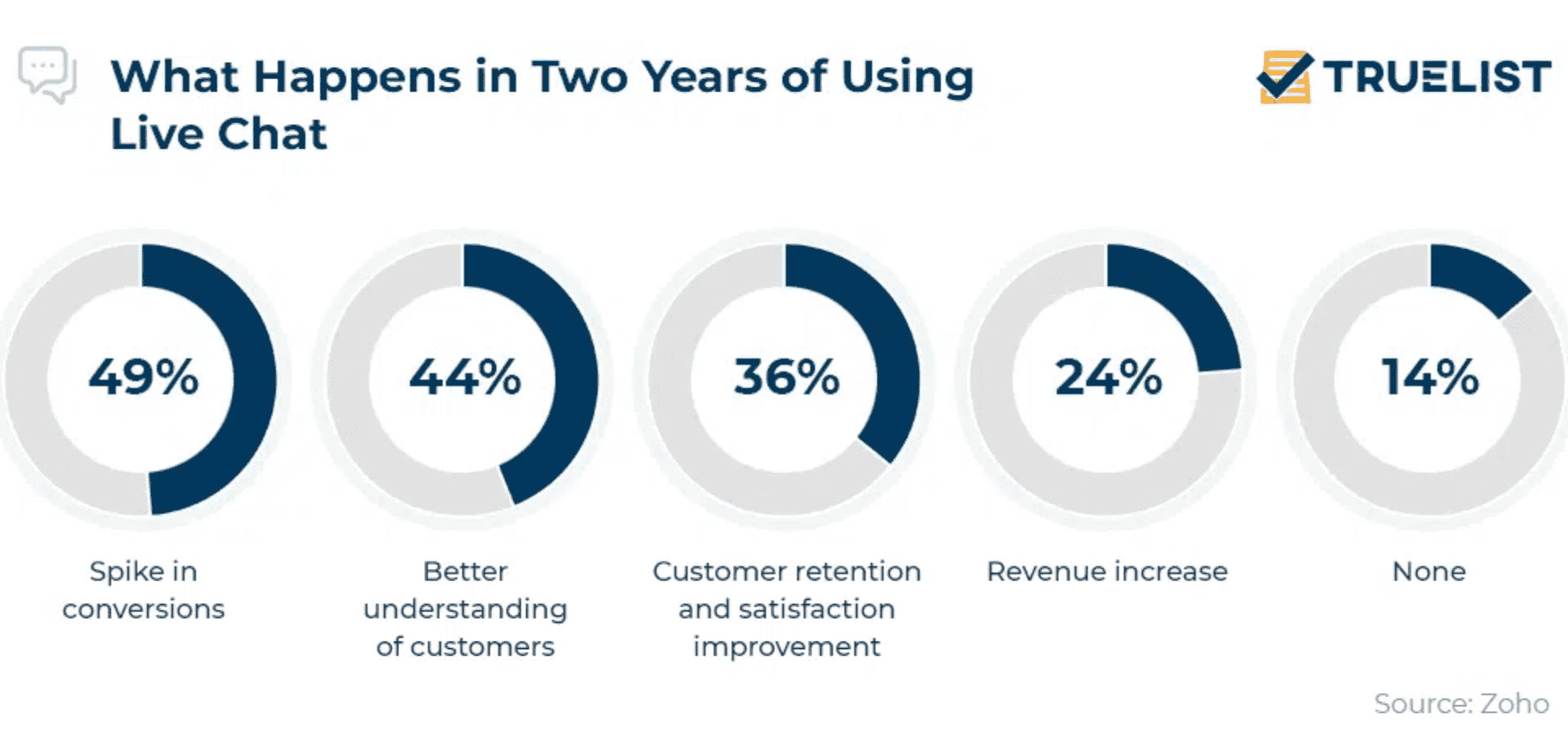
A Live Chat option on your website or app is always a plus, as it helps customers get real-time solutions to their queries. But you must ensure your customers’ chat experience is quick and instantaneous.
When users initiate a chat, it’s because they have an urgent problem or inquiry, so making them wait defeats the purpose.
To cater to the demand for instant assistance, you have two primary options: employing a chatbot or a dedicated support team to handle customer inquiries via chat.
Regardless of your choice, the key is to avoid leaving incoming chats unattended, which can lead to frustration and dissatisfaction among your users.
ProProfs Chat stands out as an excellent choice for the same. It empowers you to address customer issues through chat proactively. You can react and initiate conversations with your users, send chat pop-ups, extend friendly greetings, and deliver essential product announcements.
Watch this video to learn about live chat best practices.
Save Customers’ Time With Comprehensive FAQs
FAQs offer ready answers to your customers’ questions. A well-optimized set of FAQs can save time and resources by quickly providing the answers your customers seek.
Research suggests that 88% of customers prefer self-service support for resolving their issues.
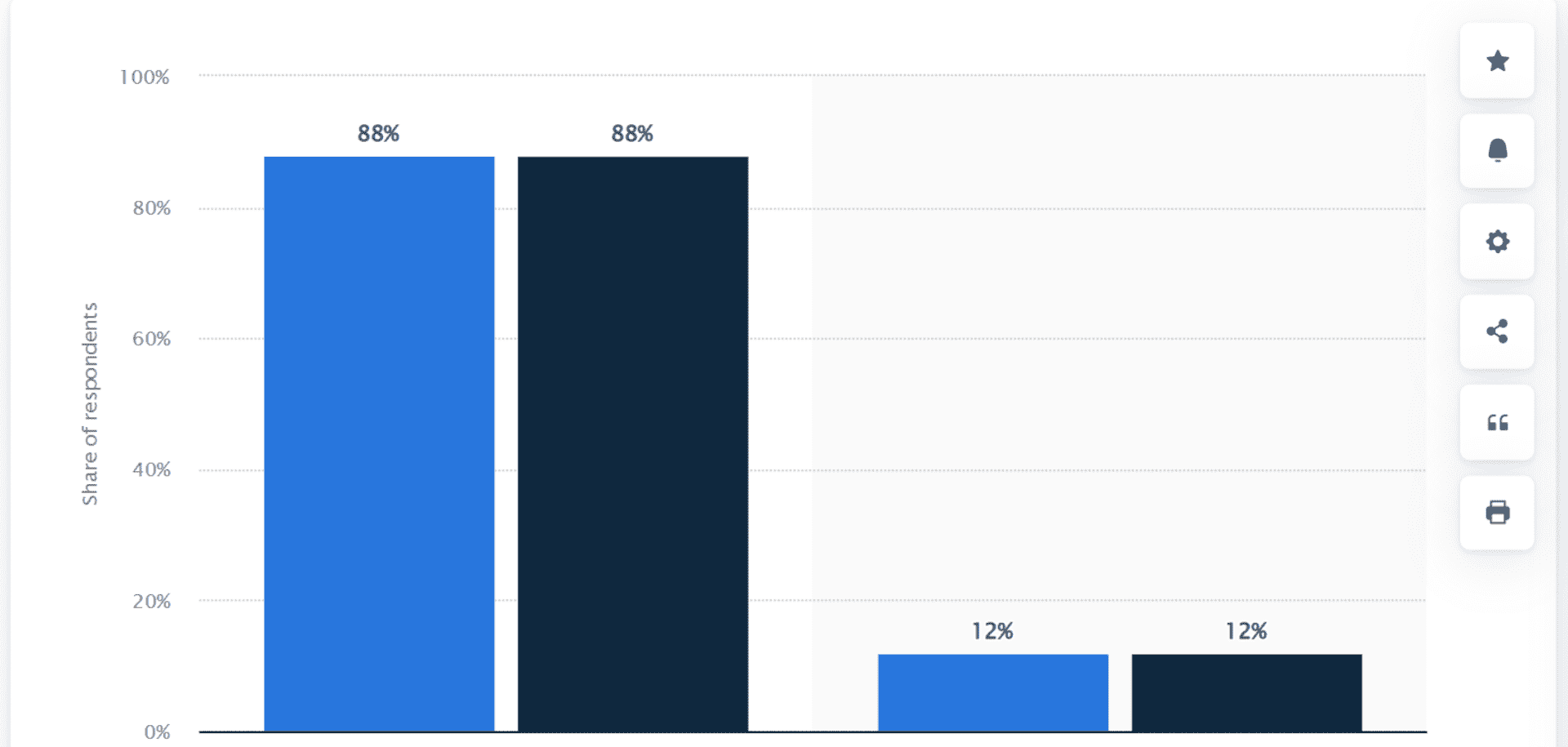
It’s essential to make sure that you update the existing FAQs with new questions and answers based on customer feedback. Outdated FAQs are worse than having no FAQs at all.
To keep your FAQs updated, monitor the type of questions customers search, frequently used keywords, past tickets raised, and more.
Based on these insights, add new and relevant questions, improve existing answers, and make your FAQ database a rich hub of relevant information.
- Analyze Customer Issues for Effective Resolutions
Receiving customer queries daily is a routine for SaaS businesses. As a result, giving equal attention to all issues reaching your support team is essential.
It’s not enough to solve an issue and then forget about it; you must analyze it, understand the underlying pain points, and provide the right solutions.
For example, let’s say customer issues are usually related to bugs, missing features, or hard-to-find features in your product. Analyzing this information can help improve your product and, consequently, the quality of customer support.
Categorize and Prioritize Customer Requests
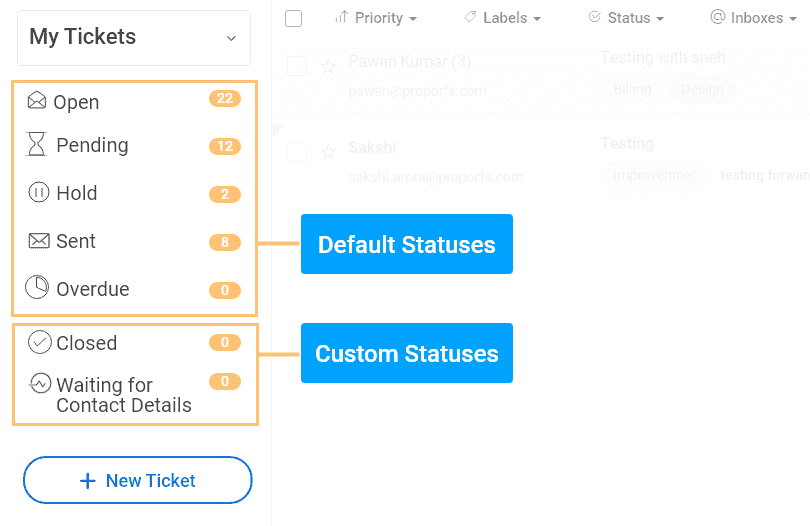
Customer queries can be random and unorganized. To establish a robust customer support process, it’s vital to classify and categorize these issues based on criteria that you deem fit.
Issue categorization uses labels, statuses, and a ticketing system to manage and organize customer issues.
Whereas prioritization allows customer success managers and system admins to assign levels of importance (High, Medium, Low) to tickets, ensuring that critical issues are addressed promptly.
Create a Centralized Database of Conversations, Issues, and Solutions
Creating a centralized database of all customer interactions, issues, and feedback is one of the foundations for creating a streamlined customer support process.
A centralized database makes it convenient to resolve new issues and track previous ones. Without it, the information received from customers will be scattered, wasting time gathering the same data repeatedly and irritating customers who have to repeat the same information.
Adapt to Mobile
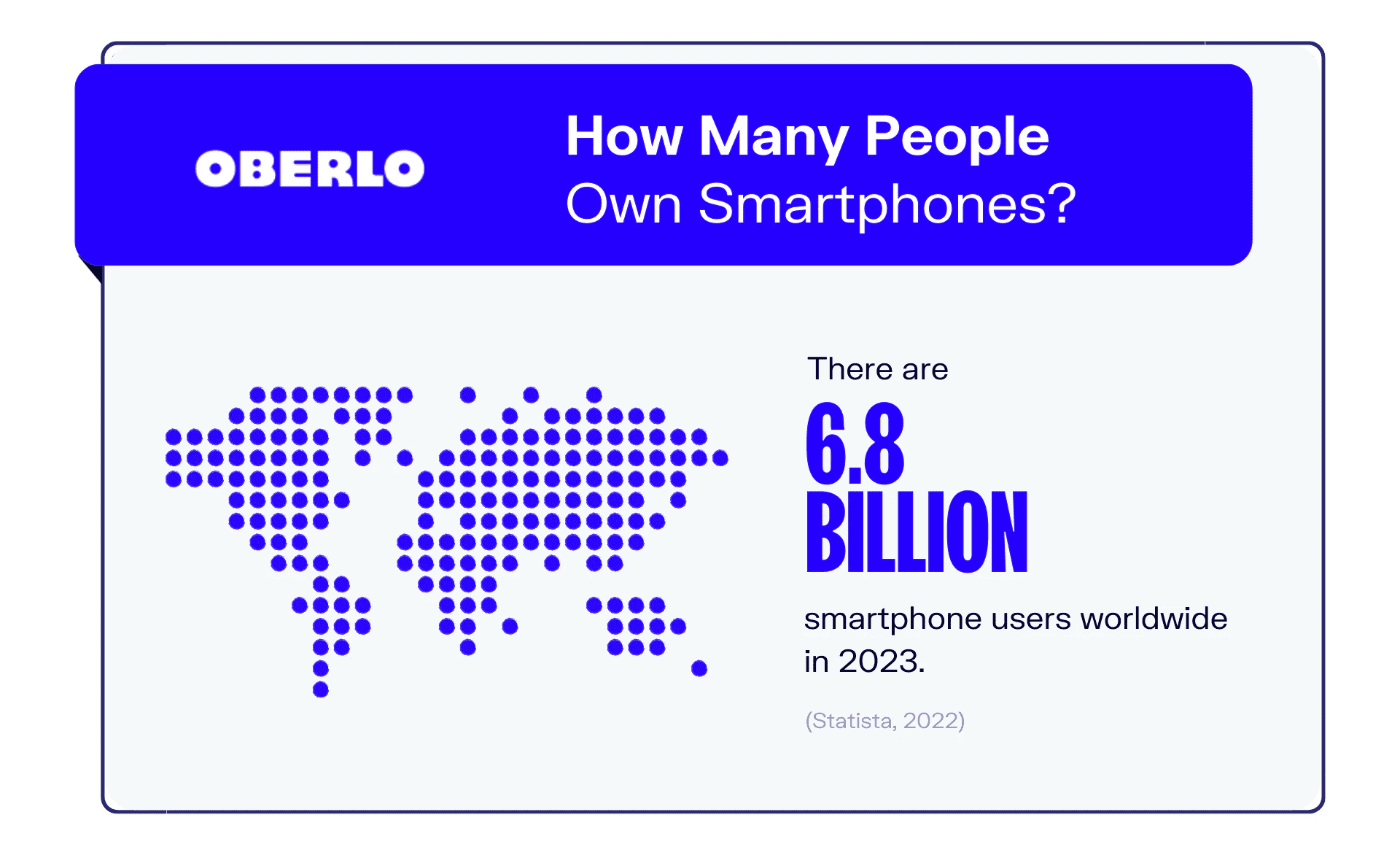
With a whopping 3.5 billion smartphone users globally, most of your customers are likely using mobile devices to seek support.
If you think your SaaS product is only desktop-based, you are ignoring current digital trends and customer expectations.
Developing a dedicated mobile app for customer service can be the next best thing, as it can help you increase engagement and retention, improve satisfaction and loyalty, and position you as an innovative brand.
Do Not Ignore Social Media Complaints & Mentions
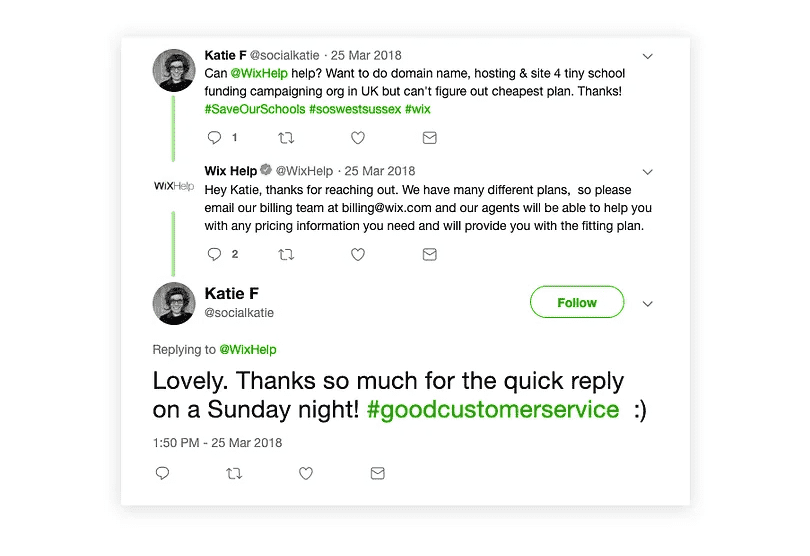
Social media is a widely used platform where customers openly express their opinions, experiences, and frustrations. By paying attention to these mentions, SaaS businesses can gain invaluable insights into their customers’ sentiments and pain points.
Effectively addressing customer complaints demonstrates a commitment to customer satisfaction.
When customers see that their concerns are acknowledged and dealt with swiftly, it enhances their perception of the brand’s dedication to meeting their needs. This can foster a sense of trust and loyalty among users.
Moreover, tracking social media mentions allows for identifying recurring issues or patterns in customer feedback.
This data can inform product improvements, feature enhancements, or bug fixes, ultimately leading to a more robust and user-friendly SaaS solution.
Recruit Skilled Employees
Did you know that poor experiences can drive away around 59% of your customers? Well, hiring the wrong agents is one of the primary reasons.
Your customer support team is always at the frontline, guiding customers in the right direction. If your agents are not knowledgeable and skilled enough to handle customer issues, the customer experience can significantly suffer.
Hiring suitable agents with relevant skills is a strategic move that shouldn’t be ignored at any cost. Some soft skills like empathy, leadership, quick decision-making, etc., can be the benchmarks for hiring the best customer support staff.
Monitor Progress
Tracking and monitoring the efforts of your customer support team provides you with a transparent picture of what you are doing right and what you lack.
Knowing your strengths and weaknesses helps you take the required steps to improve the overall customer experience. Your SaaS customer care journey will be misdirected and random without evaluating results.
It’s important to track metrics like average tickets received, average response time for resolving an issue, customer satisfaction with the support experience, the number of customers churning after receiving support, and more.
Incentivize Customer Retention With Loyalty Programs
Loyalty programs incentivize customer retention by offering rewards, discounts, or exclusive access to valued customers. It encourages them to stay committed to your services.
This incentivization helps to decrease the possibility of churn and ensure a stable customer base, making it easier to provide consistent and personalized support.
These programs can also facilitate more robust customer engagement – customers who are part of a loyalty program feel a stronger connection to the brand. They are more likely to actively participate in user communities, provide feedback, and seek assistance when needed.
Moreover, these programs offer a structured platform for gathering data and understanding customer behavior. You can track customer preferences, usage patterns, and feedback through these programs.
Actively Seek Customer Feedback
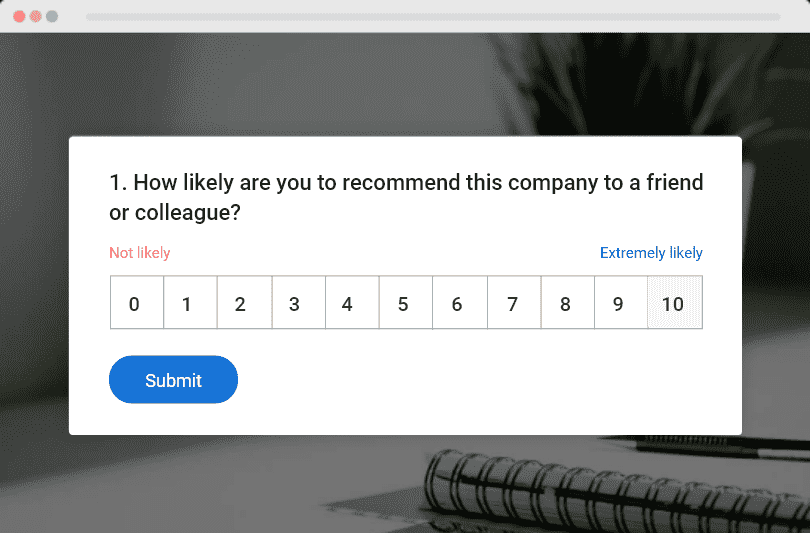
SaaS business customers usually pay for the product repeatedly, typically monthly, quarterly, or annually. The product evolves as customer expectations change.
Feedback and insights from customers help your product and the entire SaaS business model adapt to the changes.
Collecting valuable feedback provides insight into what customers think about your product, their suggestions for improvement, their pain points, and much more. This can enhance your product features, UI, value propositions, and customer support.
Critical Components of a Great SaaS Support Strategy
It’s a common misconception that hiring empathetic individuals is sufficient for establishing a practical support function. It is not!
There are several fundamental elements that you, as a SaaS company, should incorporate into your support strategy.
Diversified Customer Contact Channels
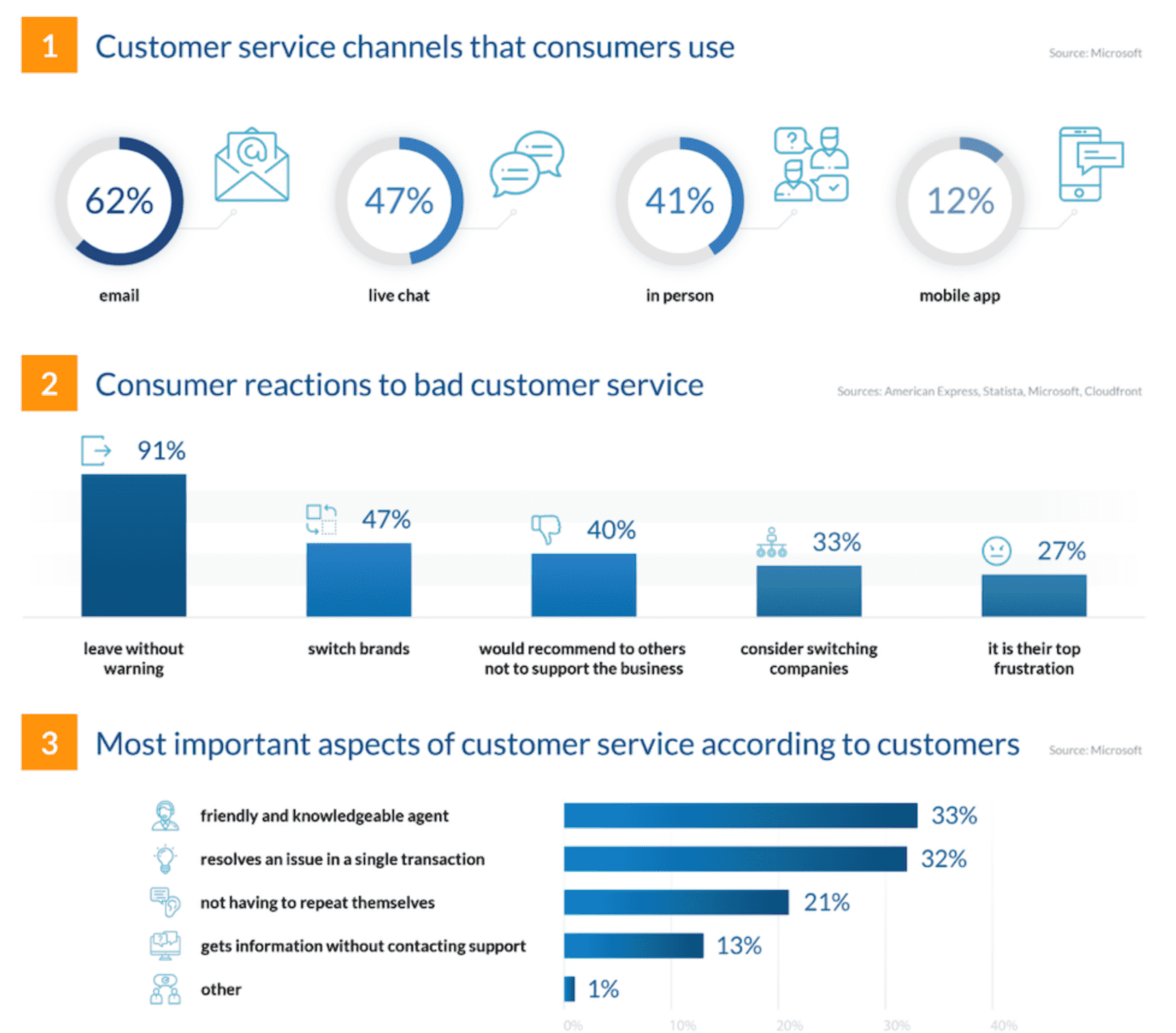
Customer support has evolved beyond the traditional method of calling a toll-free line and undergoing long hold times. Customers now have a variety of preferred contact methods – from phone calls and emails to social media mentions and support forms.
You must ensure multiple communication channels are available for customers and integrated into your ticketing system.
2. Efficient Ticket Management System
A dedicated help desk support tool is vital for efficient ticket processing. Expanding your customer base is a double-edged sword; although it drives business growth, it can also lead to overwhelming requests.
A robust SaaS customer support platform that tracks issues, their origin, timing, and purpose ensures no requests are lost in the daily operations.
Watch this insightful video to learn how to create a ticketing system for customer support.
Streamlined Ticket Routing Process
With increasing requests, assigning tickets to the relevant team members is crucial. A well-structured support process should guide the flow of tickets, considering the division of labor for efficient resolution.
It doesn’t matter if an issue is a tier-one support matter or a sales request; once tickets enter your system, they should be routed to the appropriate professional without manual intervention.
Remember that automation will only function effectively by leveraging the data in your systems.
Maintaining Data Integrity
How you maintain data hygiene can significantly impact your business. For example, email databases degrade by about 22.5% annually.
Your Customer Relationship Management (CRM) system is usually immune to this degradation. Maintaining data hygiene demands a company-wide effort that extends beyond customer support.
You should focus on identifying who your customers are and what products they have.
5 Examples of SaaS Companies With Great Customer Support
Businesses that excel in providing exceptional support cultivate satisfied customers and establish the customer experience as their USP.
Statistics show that customers are willing to pay a premium of up to 25% to engage with a company renowned for its exceptional service.
The following companies have gained widespread recognition for their exceptional support. Let’s have a look and take some inspiration.
1. Mailchimp: Activating Customer Support from the Start
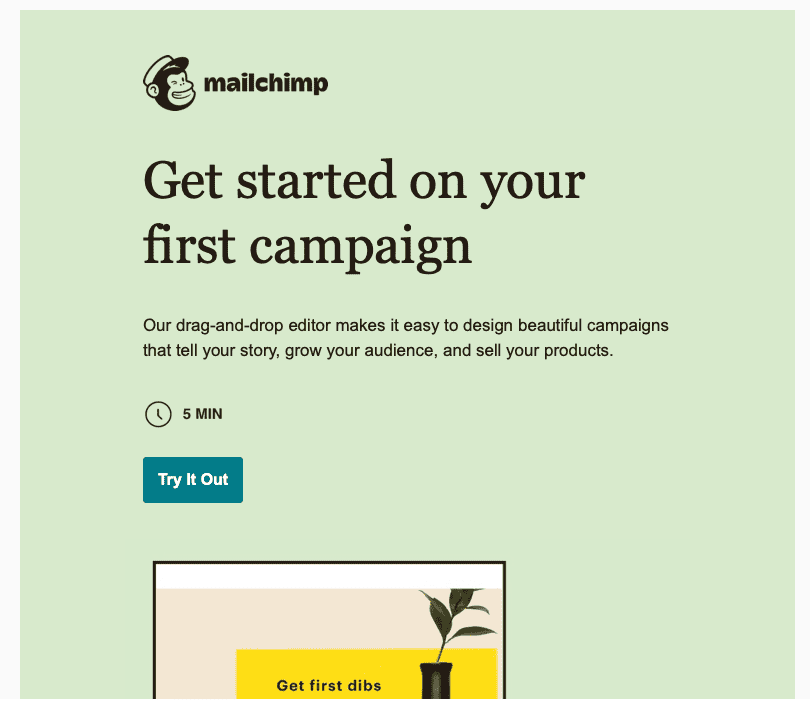
Many SaaS companies wait for customers to seek help, which can be a missed opportunity. From the moment your users create an account, you should ensure they know how to use your product and are encouraged to familiarize themselves with it.
MailChimp sends a brief welcome email to new users with a link to a tutorial on using their drag-and-drop editor. This prompts users to use the platform immediately, capitalizing on their initial momentum and excitement.
2. DigitalOcean: Proactive Support Approach
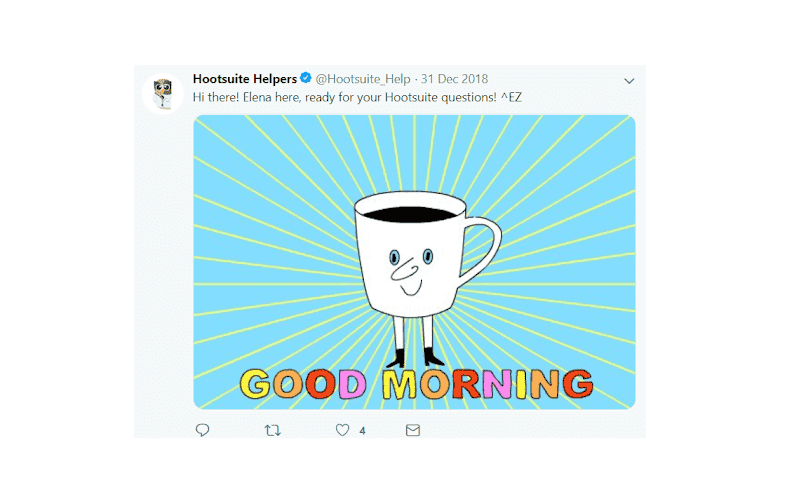
Maintaining open communication with customers about ongoing operational, product, or customer service developments is crucial.
For example, if your company has recently rolled out a software update, it’s not always guaranteed to go smoothly. Therefore, it’s safer to anticipate potential issues and be prepared to address them.
DigitalOcean has done it right, setting a precedent for proactively informing customers about system upgrades and outages. This helps users plan accordingly and minimizes disruptions.
Keeping users informed during updates and outages can alleviate your support team’s workload following an issue and help mitigate customer complaints.
3. Hive: Multiple Customer Support Options
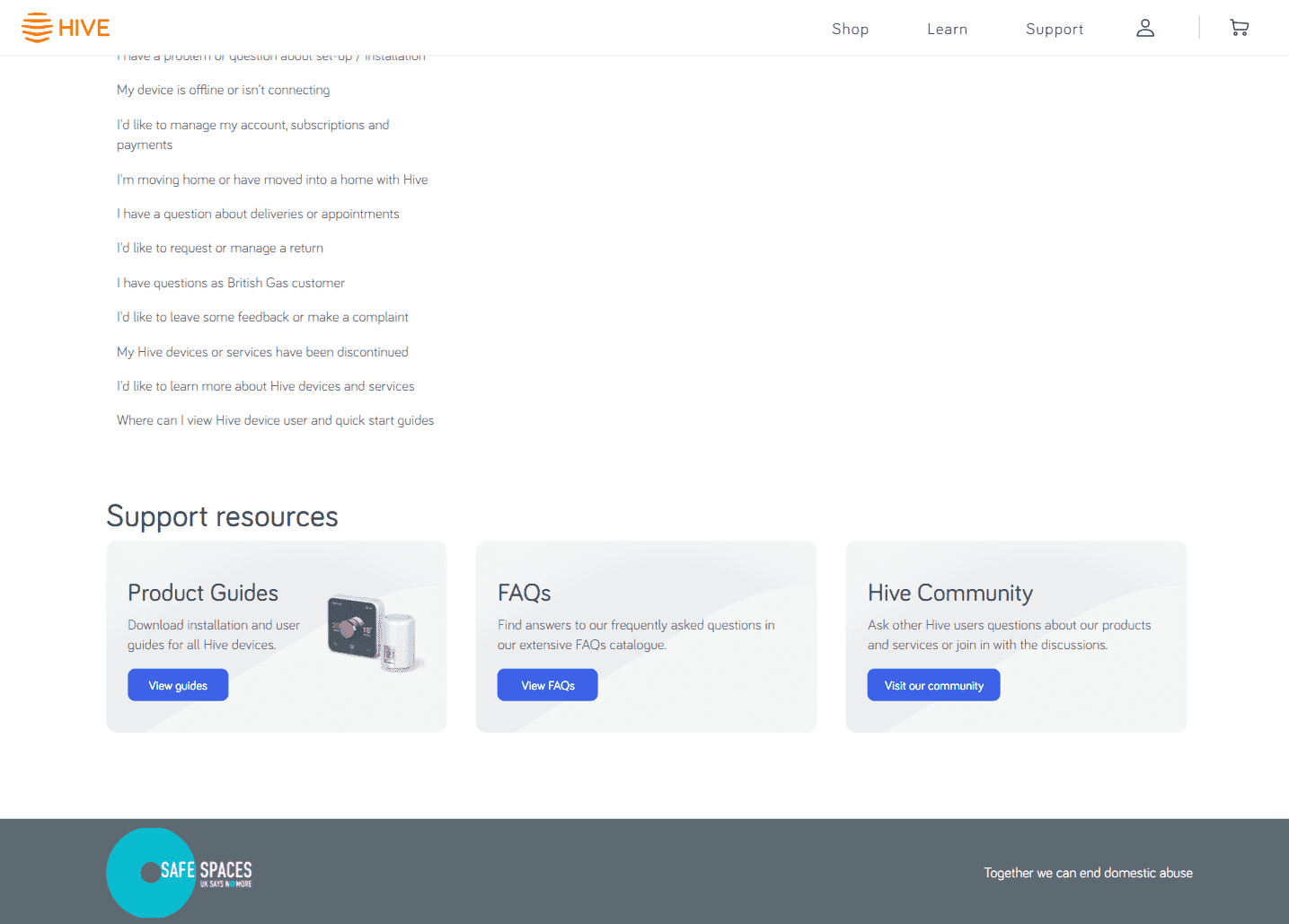
Customers are usually directed towards different paths of customer support, which can take a lot of time to discover the right option.
Hive solves this by having a dedicated section for support on every page of their portal/app. Once users click on it, they are greeted with all the support options in one location, saving customers time in ‘discovering’ the support options.
4. Pollfish: Engaging Customers With Live Chat
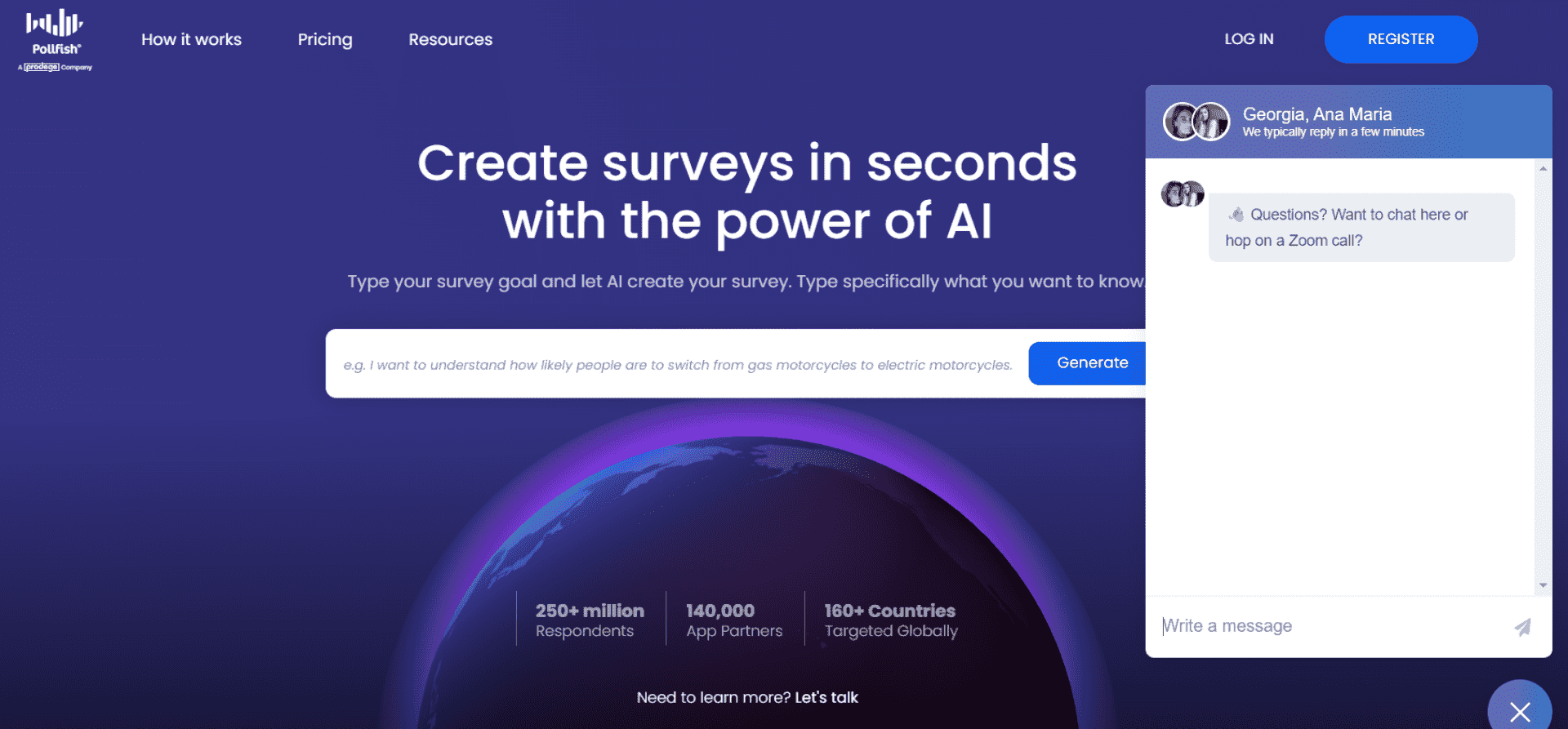
Live Chat is a fast-growing support channel. But what good is it if users don’t utilize it?
Pollfish ensures they implement it effectively by showing users a pop-up with a straightforward question about their target audience and the desired reach.
The pop-up is well-crafted and covers two relevant, close-ended questions without being complicated. This way, visitors don’t have to take the first step in reaching out or think of a way to explain their needs.
5. Slack: Simplifying Self-Service
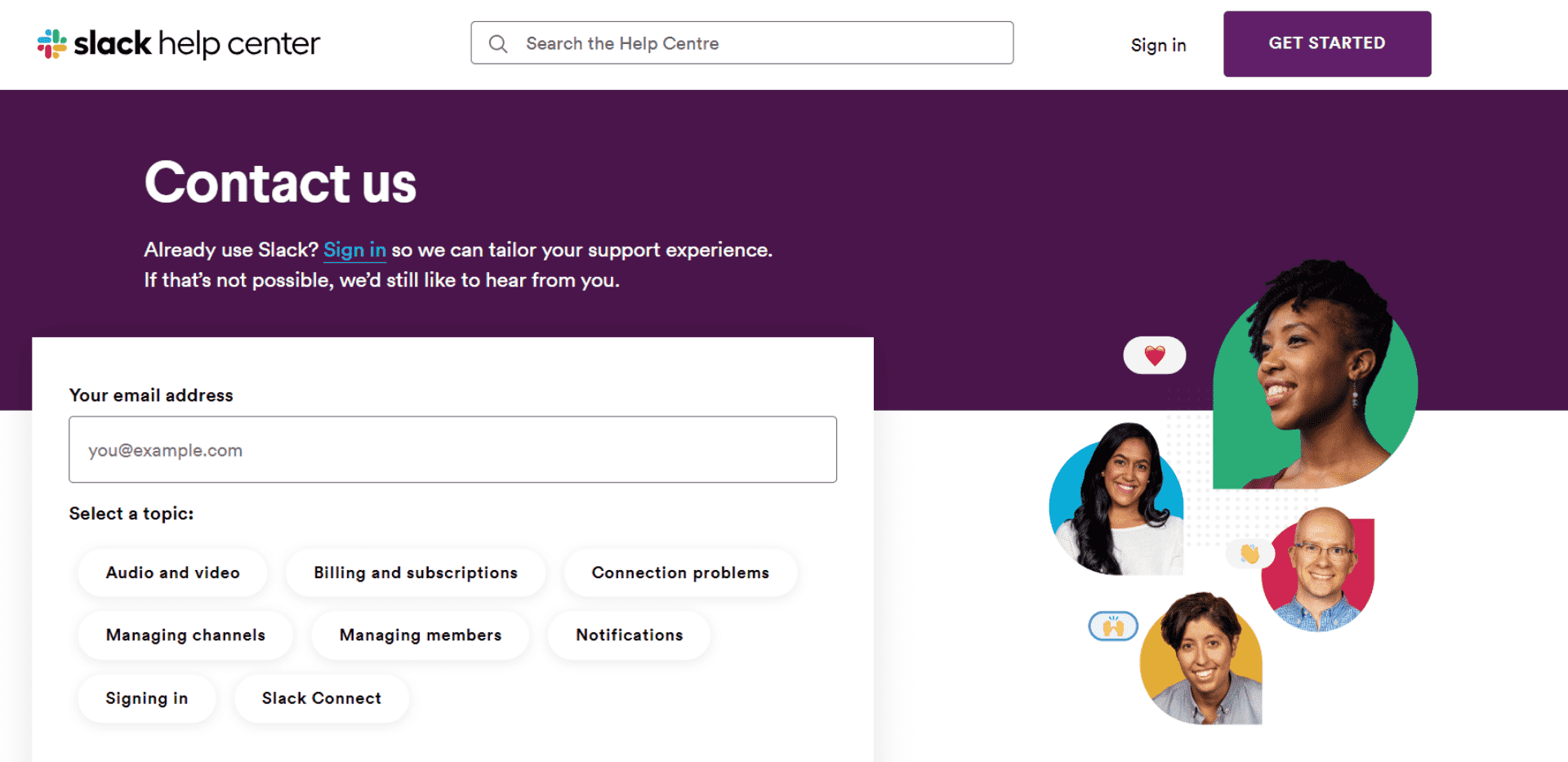
Creating an effective self-service portal is not just about answering a few commonly asked questions but designing an informative, user-friendly resource that serves as a stand-in for a support agent.
Slack simplifies finding answers by including an auto-suggest feature in its self-service search bar. It makes it convenient for users to navigate directly to the most relevant article for their needs, even if they aren’t exactly sure how to phrase a question.
Evaluation Criteria
The evaluation of products or tools chosen for this article follows an unbiased, systematic approach that ensures a fair, insightful, and well-rounded review. This method employs six key factors:
- User Reviews / Ratings- Direct experiences from users, including ratings and feedback from reputable sites, provide a ground-level perspective. This feedback is critical in understanding overall satisfaction and potential problems.
- Essential Features & Functionality: The value of a product is ascertained by its core features and overall functionality. Through an in-depth exploration of these aspects, the practical usefulness and effectiveness of the tools are carefully evaluated.
- Ease of Use: The user-friendliness of a product or service is assessed, focusing on the design, interface, and navigation. This ensures a positive experience for users of all levels of expertise.
- Customer Support: The quality of customer support is examined, taking into account its efficiency and how well it supports users in different phases – setting up, addressing concerns, and resolving operational issues.
- Value for Money: Value for money is evaluated by comparing the quality, performance, and features. The goal is to help the reader understand whether they would be getting their money’s worth.
- Personal Experience/Expert’s Opinion or Favorites: This part of the evaluation criteria draws insightful observations from the personal experience of the writer and the opinions of industry experts.
Boost Subscriptions & Loyalty With Holistic SaaS Customer Support
SaaS customer support is not just a business process deployed out of necessity but an opportunity to nurture closer, lasting customer relationships.
The best practices discussed above can serve as inspiration for delivering unparalleled customer support.
ProProfs Knowledge Base can be a stepping stone for the same. It allows you to create a comprehensive self-service portal where customers can find answers to their questions, reducing the need for direct interaction with support agents.
FREE. All Features. FOREVER!
Try our Forever FREE account with all premium features!





